6 Greatest Rococo Artists You Should Know
Rococo was the major art movement of the 18th century. Its main characteristics are lightness, decorativeness, and subjects from everyday life of the...
Anastasia Manioudaki 15 January 2024
Before reading on, you should know that Jean-Honoré Fragonard was a Rococo master. One can say that Fragonard was Rococo. The works of this French painter and printmaker are pure exuberance and hedonism. Combined with loose brushstrokes and brilliant colors, this made Fragonard a synonym of the style.

Fragonard produced more than 550 paintings (not including several thousand drawings and various etchings). Even as he began to paint less in later years, Fragonard served as an administrator for the Louvre.
Despite his countless pieces of art, years in the French Academy, and patronage by France’s wealth and aristocracy, only five of Fragonard’s pieces are dated. One such painting is featured below.
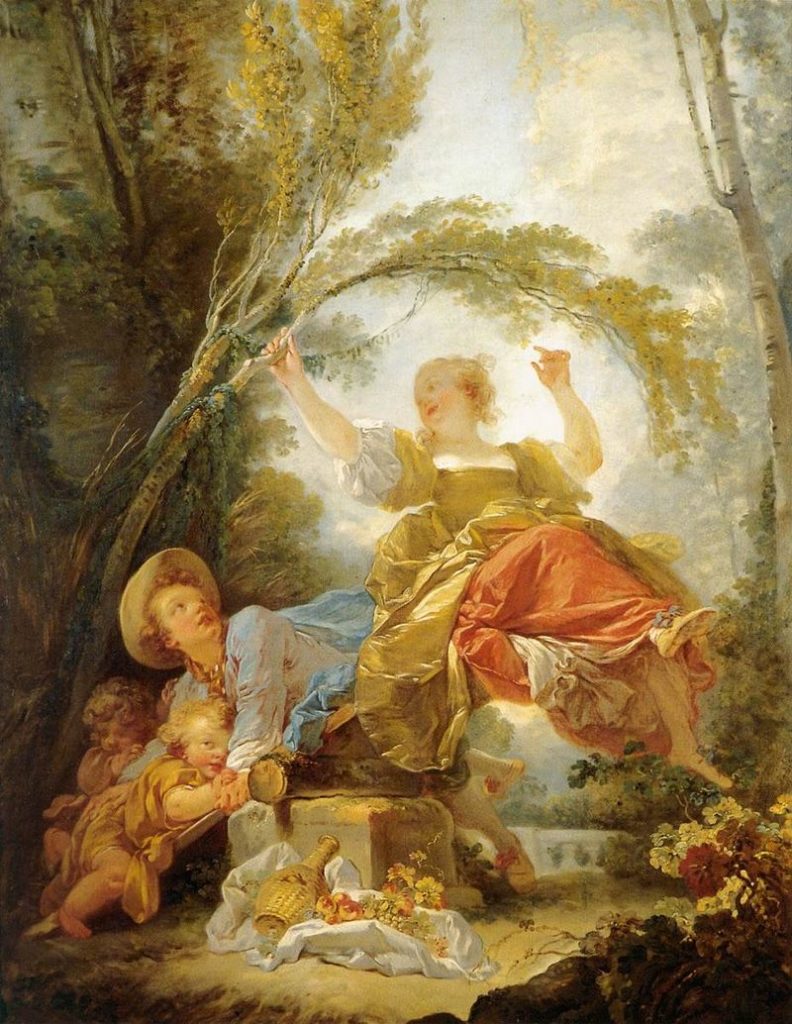
At the age of eighteen, Fragonard articled for a Paris notary, but he showed such talent that he began working with another famous Rococo master, François Boucher. Boucher, however, sent him away to Chardin to gain more experience. After six months, Fragonard came back to Boucher and acquired his style.
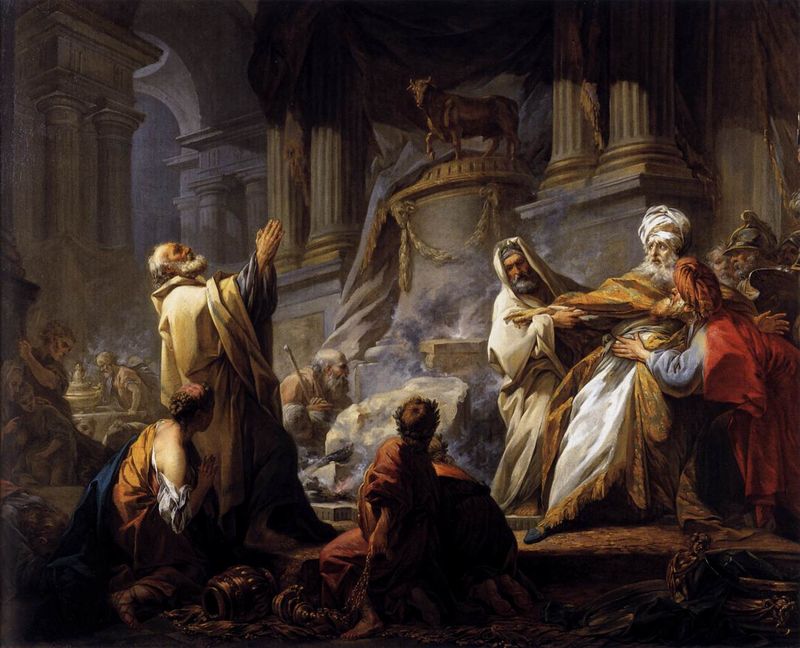
Fragonard gained the prestigious Prix de Rome scholarship award, given by the French Academy, by submitting his painting Jeroboam Sacrificing to the Golden Calf (1752). Along with other scholarship students, Fragonard then went to study at the French Academy in Rome, where he spent a lot of time outside, sketching depictions of the Roman scenery. While in Rome, Fragonard befriended fellow artist Hubert Robert, who focused heavily on landscapes. Following the end of his scholarship, Fragonard toured Italy with Robert and Jean-Claude Richard de Saint-Non (also referred to as Abbé de Saint-Non) in 1760.
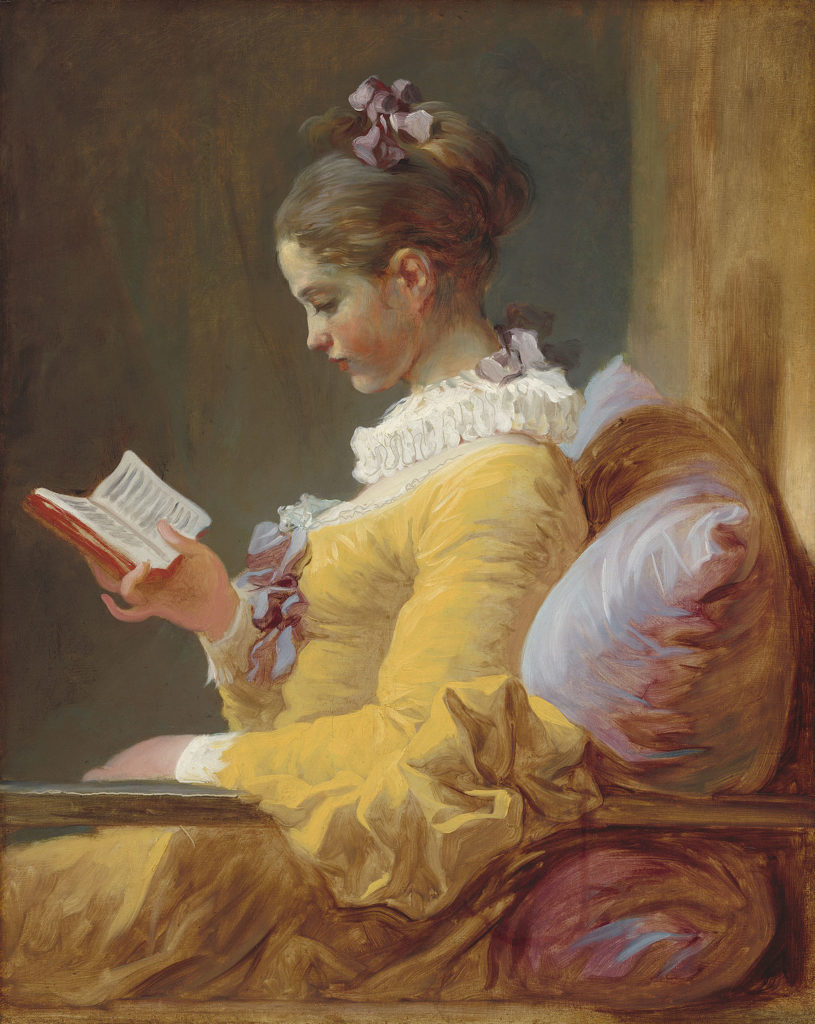
Fragonard married Marie-Anne Gérard, an artist credited for painting miniatures attributed initially to her husband, in 1769. They had a son, Alexandre-Évariste Fragonard, and a daughter, Rosalie. Though she did not become an artist like her brother, Rosalie is well-known as a model for Fragonard’s art. She is depicted in pieces such as the famous painting, A Young Girl Reading (1770), and is thought to be the model for Young Woman Standing (1775-1785).
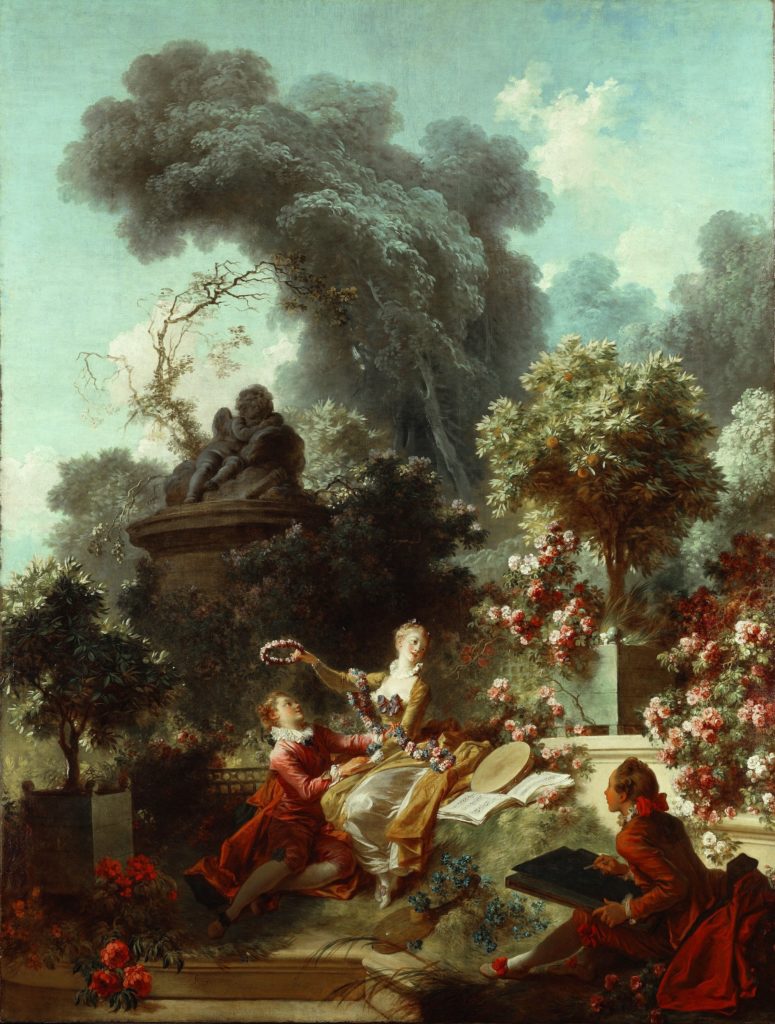
Though Fragonard survived the bloody violence of the French Revolution, it had a profound impact on his career and later years. Most of his wealthy patrons suffered during the Revolution; many led to the guillotine and others were exiled. Fragonard, who had spent much of his career completing private commissions for his now-lost patrons, ultimately decided to leave Paris and sought solace in Grasse. He stayed with his cousin Alexandre Maubert, taking with him Les progrès de l’amour dans le cœur d ‘une jeune fille (1771-1773), the four-piece series initially commissioned by Louis XV’s mistress, Madame du Barry.
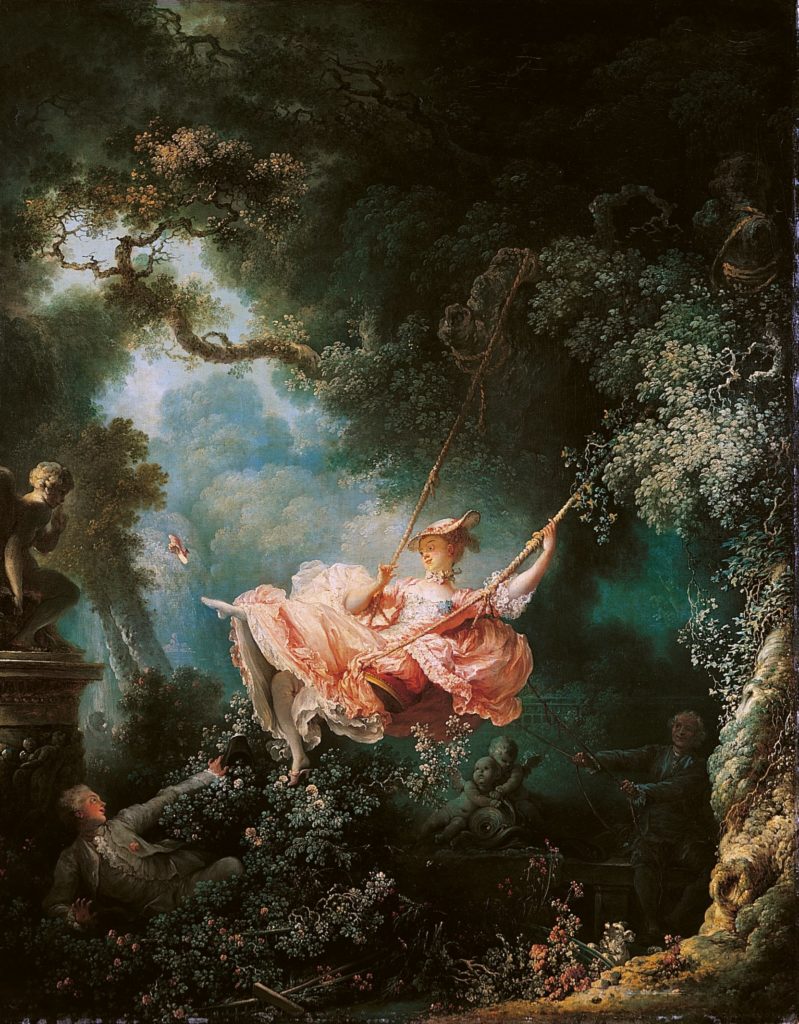
Originally titled Les Hasards heureux de l’escarpolette (roughly translated as The Happy Accidents of the Swing), this oil painting is often regarded as his best-known work. Commissioned by Baron Louis-Guillaume Baillet de Saint-Julien in 1767, it is famous for its erotic undertones and sensual positioning. Asked to portray the Baron’s mistress, Fragonard depicted her as a vision in pink. As the woman in the painting swings forward, her shoe slips off the end of her left foot, leaving her right foot pointing down into shrubbery and near her lover. Fragonard’s intentional use of coloring draws the viewer’s attention first to the woman. As one looks closer, however, the whole scene becomes clear: mistress in the middle, lover on the left (hiding), and husband pulling the ropes of the swing. This painting is still regarded as a masterpiece of the Rococo era.
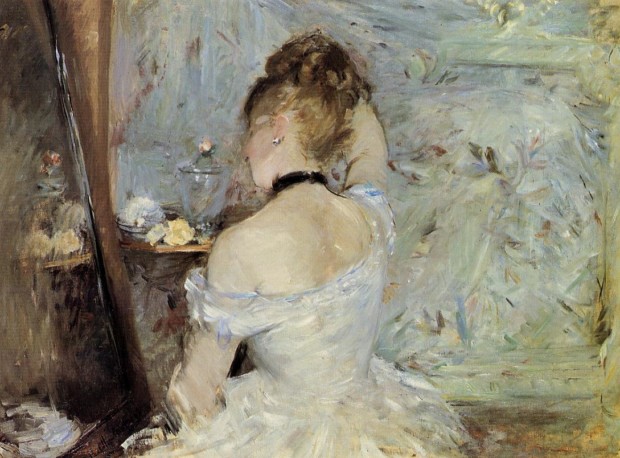
The Impressionist movement, thought of as an abandonment of older art styles, focuses on the influence of movement, light, and perspective. There is evidence of Fragonard’s impact on works by many renowned Impressionists. The visible and light brushstrokes in Fragonard’s work echo throughout the whole of the Impressionist style, as seen in paintings by artists such as Monet. In this way, though forgotten when he died in 1806, the importance of Fragonard’s work is evidenced by its influence on the art that followed. Just compare Fragonard’s work to Renoir’s and Berthe Morisot’s (who was his grandniece)!
DailyArt Magazine needs your support. Every contribution, however big or small, is very valuable for our future. Thanks to it, we will be able to sustain and grow the Magazine. Thank you for your help!